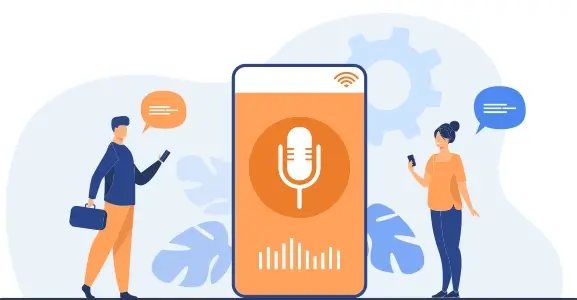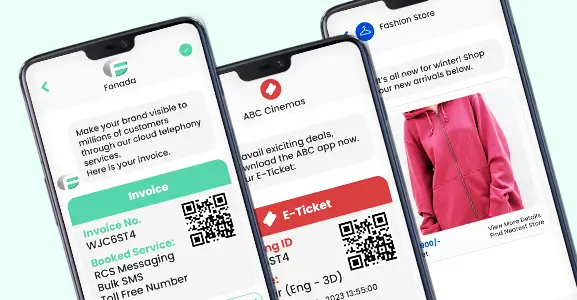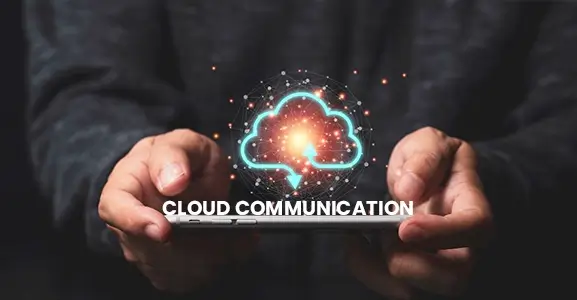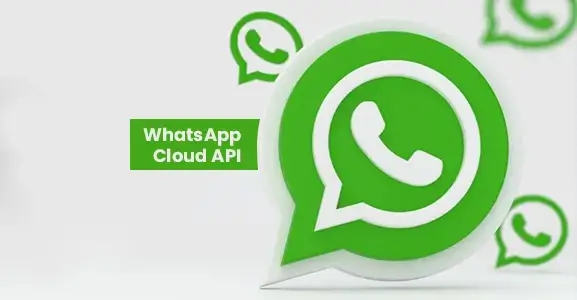Voice broadcasting is a mass communication technique that delivers pre-recorded voice messages to a large audience simultaneously. Businesses and organizations use this automated system to broadcast announcements, promotions, reminders, and other important information to a wide range of recipients.
The process involves uploading a recorded message, specifying the target audience, and then utilizing a system to broadcast the message via phone calls. This efficient communication method is commonly employed for marketing campaigns, political outreach, emergency notifications, and more.
Voice broadcasting enables swift dissemination of information to a diverse audience, allowing businesses to reach customers, employees, or community members quickly and cost-effectively. Additionally, it provides a scalable solution for personalized communication, as messages can be customized based on the intended recipients.
How Does Voice Broadcasting Messaging Work?
Voice broadcasting operates through an automated system designed to deliver pre-recorded messages to a large audience. Here’s a simplified overview of how the process typically works:
- Message Recording: The first step involves recording the message that needs to be broadcast. This can be a promotional offer, an announcement, a reminder, or any other type of information.
- Message Upload: The recorded message is then uploaded to the voice broadcasting platform. Some systems allow users to customize messages based on the target audience.
- Contact List Selection: Users select the target audience or contact list for the broadcast. This could include customers, employees, voters, or any group that needs to receive the message.
- Scheduling: Users set the date and time for the broadcast. This allows for strategic timing, such as sending promotional messages during peak hours or delivering reminders at specific times.
- Initiating the Broadcast: Once everything is set up, the voice broadcasting system initiates the broadcast. The system dials the phone numbers in the selected contact list and plays the pre-recorded message when the call is answered.
- Handling Responses (Optional): In some cases, advanced systems may include Interactive Voice Response (IVR) features that allow recipients to interact with the message—responding to prompts, pressing keys to get more information, or connecting to a live agent.
- Reporting and Analytics: After the broadcast is complete, users can access reports and analytics to evaluate the effectiveness of the campaign. This may include metrics like the number of successful deliveries, call durations, and response rates.
Voice broadcasting is an efficient and scalable way to communicate with a large audience, making it a valuable tool for businesses, organizations, and political campaigns.
Types Of Voice Broadcasting
Voice broadcasting encompasses various types tailored to specific communication needs:
- Outbound Telemarketing: Businesses use this type to broadcast promotional messages, product offers, or marketing campaigns to potential customers.
- Alerts and Notifications: Organizations deploy voice broadcasting to disseminate critical information such as emergency alerts, event reminders, or service notifications.
- Political Campaigns: Political entities utilize voice broadcasting to reach a large audience with campaign messages, updates, and rally information.
- Appointment Reminders: Healthcare providers, businesses, and service-oriented organizations use voice broadcasting to remind individuals of upcoming appointments, reducing no-shows.
- Surveys and Polls: Conducting surveys or polls via voice broadcasting allows organizations to collect feedback from a broad audience efficiently.
- Employee Communication: Companies use voice broadcasting for internal communication, keeping employees informed about important updates, policies, and announcements.
- Interactive Voice Response (IVR): Advanced systems incorporate interactive features, allowing recipients to respond to prompts or navigate through menu options using their phone keypad.
- Fundraising and Nonprofit Campaigns: Charities and nonprofit organizations leverage voice broadcasting to connect with donors, share updates, and request support for fundraising initiatives.
These variations highlight the versatility of voice broadcasting, making it a valuable tool across industries for streamlined and effective communication.
Read More: Top Customer Engagement Trends Of 2023
Features Of Voice Broadcasting System
Voice broadcasting platforms offer a variety of features to enhance communication efficiency. Here are key features commonly found in voice broadcasting systems:
-
Message Customization:
Users can record and customize messages to suit different purposes, ensuring personalized communication.
-
Contact Management:
Efficient handling of contact lists, allowing users to upload, organize, and manage recipient information.
-
Scheduling:
The ability to schedule broadcasts at specific dates and times, ensuring messages reach recipients at optimal moments.
-
Interactive Voice Response (IVR):
Advanced systems may include interactive features, enabling recipients to respond to prompts, navigate menus, or connect with live agents.
-
Reporting And Analytics:
Detailed reports on campaign performance, including delivery rates, call durations, and response metrics, to evaluate the effectiveness of the broadcast.
-
Do-Not-Call Compliance:
Features to manage and comply with do-not-call lists, ensuring legal and ethical use of the voice broadcasting system.
-
Caller ID Customization:
The option to customize the caller ID information displayed when the recipient receives the call, adding credibility to the message.
-
Multi-Language Support:
Capability to deliver messages in different languages to accommodate diverse audiences.
-
Call Recording:
Some systems allow users to record calls for quality assurance, compliance, or review purposes.
-
Opt-Out Mechanism:
Built-in mechanisms that allow recipients to opt-out or unsubscribe from future broadcasts, ensuring compliance with regulations and respecting privacy.
-
Scalability:
The ability to handle large volumes of calls, making the system suitable for both small-scale and large-scale campaigns.
-
Integration With Other Systems:
Compatibility with CRM systems, databases, or other tools, facilitating seamless data exchange and enhancing overall workflow.
-
Emergency Broadcasts:
Features for rapid deployment of emergency alerts or notifications to quickly reach a large audience in critical situations.
-
Campaign Testing:
Some platforms allow users to run small-scale tests before launching a full campaign, helping to refine messages and strategies.
-
API Support:
This feature allows for integrating customer response reports within the software for better visibility.
-
Auto Retry:
This feature retries sending voice broadcasts to customers who haven’t responded to the first attempt.
-
Easy DND List Management:
This feature helps you manage customers who have requested not to receive voice broadcast calls.
-
Live Call Transfer:
This feature allows live call transfers to agents, improving the customer experience.
-
Retry Delay:
This feature optimizes the time between unanswered responses for the next campaign.
-
Scheduling Control:
This feature allows you to schedule campaigns conveniently for customers to ensure that none of the calls are left unanswered.
-
Text-To-Speech And Upload Audio File:
With this feature, you can convert text messages into speech or upload a pre-recorded audio file to send to customers.
These features collectively contribute to the effectiveness and versatility of voice broadcasting systems across various industries and applications.
Top 10 Benefits Of Voice Broadcasting
Voice broadcasting offers numerous benefits for businesses, organizations, and political campaigns, enhancing communication and outreach.
Here are 10 Key Advantages:
- Cost-Effective Communication: Voice broadcasting allows businesses to convey messages to a large audience simultaneously, reducing the costs associated with traditional outreach methods.
- Efficient Time Management: Messages can be broadcasted promptly, enabling quick communication and outreach to a broad audience in a short time frame.
- Personalized Messaging: Businesses can customize messages to cater to specific demographics or customer segments, fostering a more personalized and engaging communication experience.
- Broad Reach: With the capability to contact thousands of recipients simultaneously, voice broadcasting significantly expands the reach of messages, making it an efficient tool for mass communication.
- Automation and Scalability: Automated systems handle the entire broadcasting process, making it scalable for campaigns of various sizes without a proportional increase in effort.
- Immediate Response Handling: Interactive features, such as Interactive Voice Response (IVR), allow recipients to respond to prompts, facilitating immediate engagement and response handling.
- Data Analytics for Optimization: Voice broadcasting platforms provide detailed reports and analytics, offering insights into campaign performance and enabling organizations to optimize future broadcasts.
- Enhanced Customer Engagement: Businesses can use voice broadcasting to engage customers with promotions, surveys, and interactive content, contributing to stronger customer relationships.
- Emergency Notifications: Voice broadcasting is crucial for delivering urgent messages and emergency notifications promptly, ensuring timely communication during critical situations.
- Compliance and Opt-Out Mechanisms: Voice broadcasting systems often include features to comply with regulations, such as allowing recipients to opt-out or unsubscribe, promoting ethical and legal use.
Voice broadcasting’s efficiency, scalability, and diverse applications make it a valuable tool for organizations seeking to communicate effectively with their target audience.
Read More: Customer Communication With Text-Based Reminder Message
Usage Of Voice Broadcasting System
Voice Broadcasting Systems are versatile tools with a wide range of applications across different industries.
Use Cases For The Usage Of Voice Broadcasting Systems:
-
Appointment Reminders:
Automatically remind clients or patients of upcoming appointments, reducing no-show rates and improving overall scheduling efficiency.
-
Emergency Alerts:
Quickly disseminate critical information such as emergency alerts, weather warnings, or evacuation notices to a large population within a short timeframe.
-
Political Campaigns:
Reach out to voters with campaign messages, announcements, and information about political events or rallies.
-
Customer Notifications:
Notify customers about order status, delivery updates, or important information regarding their accounts, ensuring timely communication.
-
Surveys And Feedback:
Conduct automated surveys to gather feedback from customers or constituents, helping organizations to make informed decisions based on collected data.
-
Marketing And Promotions:
Launch marketing campaigns by broadcasting promotional messages, special offers, and announcements to a targeted audience.
-
Fundraising Campaigns:
Engage with donors or supporters by updating them on fundraising goals, events, and other pertinent information.
-
Event Invitations:
Send out invitations and reminders for events, webinars, or conferences to a large audience, ensuring maximum attendance.
-
Internal Communication:
Use voice broadcasting for internal communication within organizations, such as announcing company-wide updates, policy changes, or important news.
-
Educational Institutions:
Inform students and parents about school closures, important dates, or educational events. Additionally, universities can use it for admissions-related announcements.
-
Healthcare Industry:
Notify patients of prescription refills, upcoming medical appointments, or general health-related information.
-
Community Notifications:
Keep communities informed about local news, public events, or changes in municipal services.
-
Utilities And Service Providers:
Notify customers about service outages, planned maintenance, or changes to utility services.
-
Financial Institutions:
Send alerts about account balances, fraudulent activities, or other critical financial information to customers.
-
Human Resources:
Communicate important HR announcements, policy changes, or reminders to employees across the organization.
-
Travel And Transportation:
Inform travelers about flight delays, cancellations, or changes in transportation schedules.
-
Real Estate:
Broadcast property updates, open house invitations, or important information to potential buyers, sellers, or tenants.
-
Legal And Government Agencies:
Use voice broadcasting for legal notifications, court reminders, or updates from government agencies.
-
Entertainment Industry:
Promote events, movie releases, or concert details to a targeted audience.
-
Retail Industry:
Announce store promotions, new product launches, or special discounts to customers.
When utilizing Voice Broadcasting Systems, it’s important to adhere to legal and regulatory requirements, including obtaining consent where necessary, and respecting Do Not Call lists and privacy regulations. Additionally, crafting clear and concise messages tailored to the specific context is crucial for effective communication.
FAQs
Voice Broadcasting is a mass communication technique that allows businesses or individuals to send pre-recorded voice messages to a large audience simultaneously. It is commonly used for announcements, marketing campaigns, reminders, and emergency notifications.
Voice Broadcasting works by using an automated system to call a list of phone numbers and play a pre-recorded message when the call is answered. The system can be programmed to handle voicemail, detect answering machines, and allow recipients to interact with the message through touch-tone responses.
Voice Broadcasting is used for a variety of purposes, including political campaigns, appointment reminders, event notifications, emergency alerts, customer surveys, and promotional messages.
The benefits include the ability to reach a large audience quickly, cost-effectiveness compared to manual calling, automation of repetitive tasks, improved message consistency, and the ability to track campaign performance.
The legality of Voice Broadcasting varies by jurisdiction. It’s crucial to comply with regulations such as the Telephone Consumer Protection Act (TCPA) in the United States, which governs automated calls and prerecorded messages.
Yes, many Voice Broadcasting systems allow for personalization by incorporating variables such as names, appointment dates, or other relevant information into the pre-recorded messages, making them more engaging and relevant to recipients.
Metrics such as call completion rates, response rates, and conversion rates can be used to measure the effectiveness of a Voice Broadcasting campaign. Additionally, feedback and analytics provided by the broadcasting platform can offer insights into the success of the campaign.
While both involve automated calls, Voice Broadcasting typically refers to sending messages to a broad audience for informational or promotional purposes. Robocalling, on the other hand, is a broader term that includes any automated phone call, which can be for various purposes, including scams.
Yes, Voice Broadcasting is commonly used for emergency notifications to quickly disseminate important information to a large number of people. It can be particularly effective in situations like natural disasters or public safety alerts.
Yes, some best practices include keeping messages concise, providing relevant information, using a clear and natural-sounding voice, incorporating personalization where possible, and including a call-to-action for recipients to follow.

Dec 11, 2024
Top Contact Center Optimization Tools For 2024
“A thriving business knows how to fetch maximum output from limited resources by optimizing ca... Read More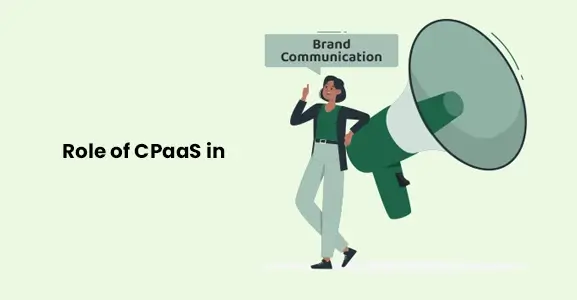
Nov 13, 2024
What Is Brand Communication? CPaaS Role Explained
Did you ever wonder why some advertisements grab your attention instantly, while others do not? The... Read More
Nov 01, 2024
What Is Automated Messaging And How Does It Work?
Automated messaging or text automation empowers businesses and marketing professionals to connect wi... Read MoreLatest Updates
From Fonada
Industry Insights, Trends, Innovations, Updates, and Case Studies from Industry Experts
View
Customer
Reviews
Discover why our customers love us - read their authentic and heartfelt reviews!
View
Case
Studies
Explore real-life scenarios, offering analysis, and solutions to practical challenges
View
Convert Leads Into Sales With Fonada
Trusted CPaaS Solution Provider

